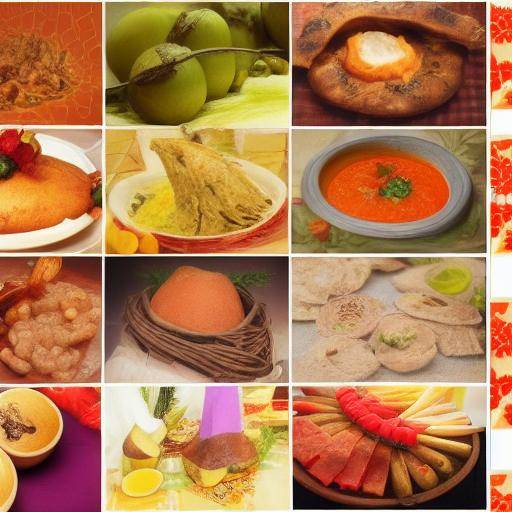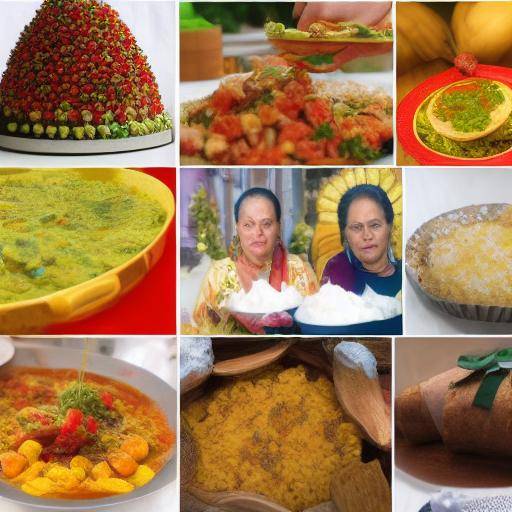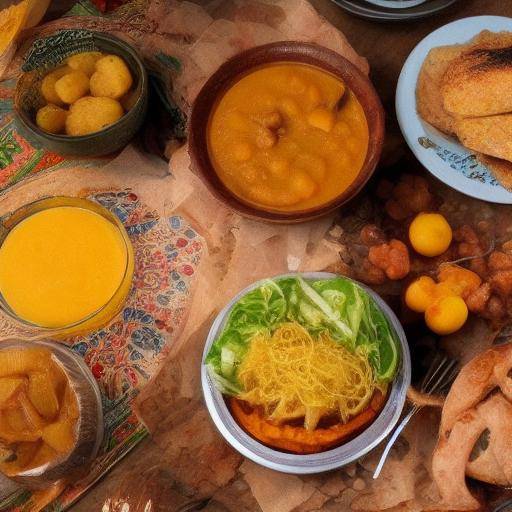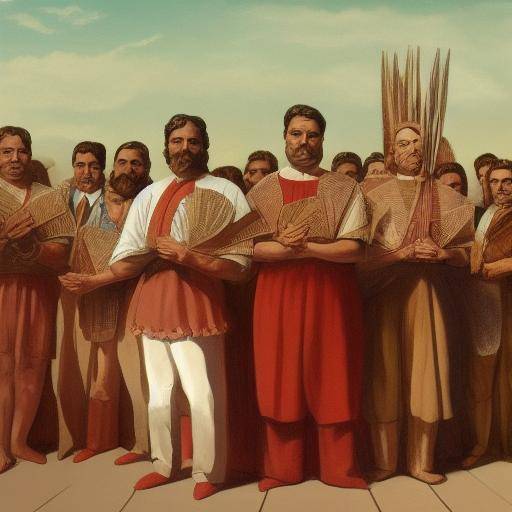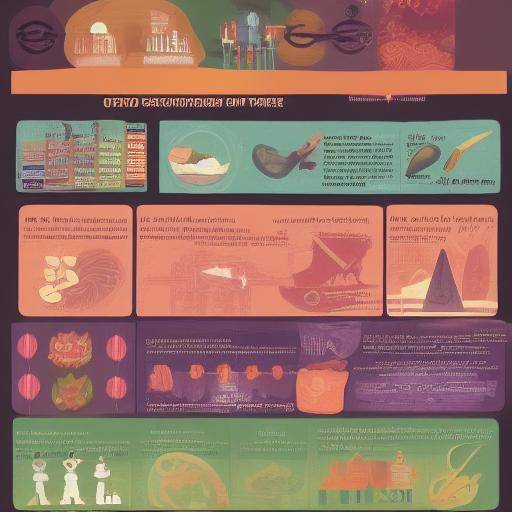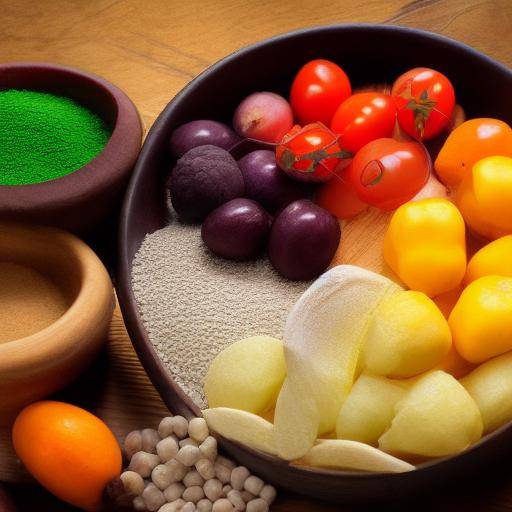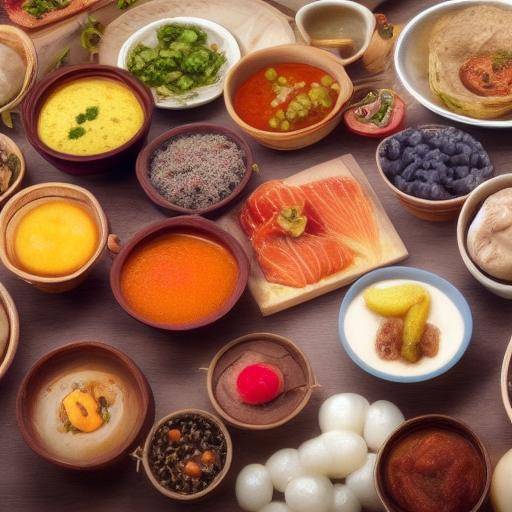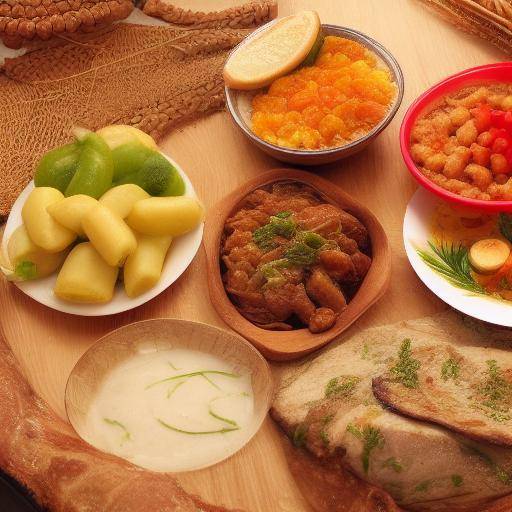
Gastronomy is a cultural expression that goes beyond the simple act of eating. Typical dishes are products of deeply rooted traditions that encapsulate the identity, history and creativity of a people. In this article, we will explore the profound meaning of typical dishes in gastronomic traditions, their evolution over time, their impact on society and their relevance in the modern era. Join us on this culinary journey that will lead you to discover the essence of food as a cultural and social manifestation.
History and Background
The history of typical dishes dates back to ancient times, where societies developed unique culinary techniques and used indigenous ingredients to create their own delights. These dishes not only performed a food function, but were also imbued with symbolic and ritual meanings. For example, in the pre-Columbian culture of Mexico, corn was considered a gift from the gods and formed the basis of many traditional dishes such as tortillas, wellle and tamales.
Mestizaje, colonization and globalization have influenced gastronomic traditions, leading to a rich diversity of typical dishes in different regions of the world. The fusion of ingredients, techniques and flavors has enriched the global culinary, but has also provoked debates on the authenticity and preservation of traditional recipes.
Exploring the evolution of typical dishes over time allows us to understand their importance in the preservation of cultural identity and in the construction of historical narratives that transcend generations.
Deep analysis
The preservation of typical dishes is essential to keep gastronomic traditions alive and to safeguard the culinary heritage of a community. However, this is not without challenges, as globalization and industrialization have led to the standardization of food, threatening gastronomic diversity.
The nutritional and cultural value of typical dishes is unquestionable. These dishes are usually made with local ingredients, fresh and mostly natural, making them a healthier and more sustainable option. In addition, the transmission of culinary knowledge from generation to generation enriches the social fabric and strengthens the sense of belonging.
At the same time, typical dishes are a tourist attraction that drives the local economy. The promotion and diffusion of traditional gastronomy contributes to the development of communities, fostering gastronomic tourism and creating employment opportunities in the sector.
Comprehensive review
In the culinary sphere, the authenticity of typical dishes is a debated theme, since the interpretation of recipes can vary according to the region, the family tradition or the influence of contemporary culinary currents. The rules of protection and certification of typical dishes seek to safeguard their origin and quality, while allowing creative adaptations that keep their essence alive.
The democratization of information and the rise of social networks have democratized the dissemination of recipes, allowing the typical dishes to transcend borders and to be inserted into the cotidianity of distant homes. This phenomenon has contributed to the global assessment and recognition of gastronomic traditions, generating a sense of global culinary community.
Comparative analysis
The diversity of typical dishes reflects the cultural and geographical richness of each region, but also reveals surprising connections between different gastronomic traditions. The influence of ingredients, culinary techniques and eating habits in the configuration of typical dishes is a living testimony of the interconnection between cultures throughout history.
Practical Tips and Accessible Recommendations
If you want to explore and enjoy the typical dishes, we recommend:
- Investigate local gastronomy before travelling to a specific region.
- Visit local markets and traditional restaurants to taste authentic dishes.
- Participate in cooking classes or gastronomic activities that offer an immersion in the culinary culture of the region.
Perceptions of Industry and Expert Reviews
Gastronomy experts agree that the preservation of typical dishes is crucial to maintain culinary diversity and promote more conscious and sustainable food consumption. In addition, they highlight the importance of integrating tradition into innovation to ensure that typical dishes remain relevant and appreciated in the modern era.
Case Studies and Real Life Applications
A notable example of the influence of typical dishes in society is the economic impact of gastronomic tourism in cities such as Oaxaca, Mexico, where the celebrated local cuisine has attracted travelers from around the world, generating development opportunities and promoting the preservation of ancestral recipes.
Future Trends and Predictions
It is projected that the global demand for typical dishes will continue to be promoted, driven by greater interest in authenticity, sustainability and culinary experience. Technology will also play a crucial role in facilitating the spread and preservation of global gastronomic traditions.
FAQs
Why is it important to preserve the typical dishes?
The preservation of typical dishes not only preserves the culinary heritage of a community, but also promotes cultural diversity, strengthens collective identity and fosters economic development through gastronomic tourism.
How do you define a typical dish?
A typical dish is the one whose preparation, ingredients and presentation are rooted in the culinary tradition of a specific region, reflecting its distinctive flavors and its cultural legacy.
What challenges do typical dishes face in the modern era?
The standardization of food, the loss of traditional recipes and the influence of fast food represent significant challenges for the preservation and dissemination of typical dishes.
How can I support the preservation of typical dishes?
Supporting local producers, promoting gastronomic tourism and participating in activities that highlight the importance of traditional gastronomy are effective ways of contributing to the preservation of typical dishes.
What is the impact of traditional gastronomy on cultural identity?
Traditional gastronomy plays a key role in transmitting values, customs and traditions, strengthening cultural identity and fostering pride and membership in a community.
How does globalization influence traditional gastronomy?
Globalization has led to the exchange of ingredients, culinary techniques and flavors, enriching gastronomic diversity, but also generating challenges in the preservation of the authenticity of typical dishes.
In conclusion, typical dishes are culinary treasures that enclose centuries of history, cultural values and ancestral wisdom. Its preservation and diffusion not only enrich the gastronomic panorama, but also nourish the soul of the communities and continue to connect people through the table. Exploring the wealth and diversity of typical dishes is to enter a journey of discovery, learning and appreciation of the gastronomic traditions that define us as human beings.
With this in mind, we encourage you to taste, celebrate and share the magic of the typical dishes, enjoying each bite as a unique experience that transcends the act of eating to become a journey through history, the flavors and emotions that unite us as a global community.
With this enriching look at typical dishes and gastronomic traditions, we hope that this article has aroused your curiosity and given you a new appreciation for the importance of preserving and celebrating the culinary diversity that enriches our lives.
Remember, in every typical dish there is a piece of history, a pinch of cultural identity and a universe of flavors to discover. Join us on this delicious journey through gastronomic traditions!



